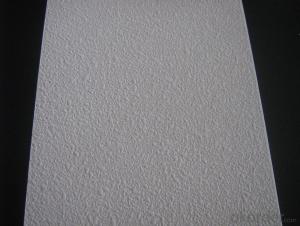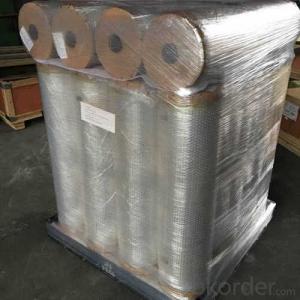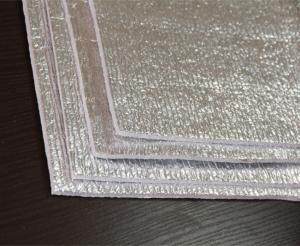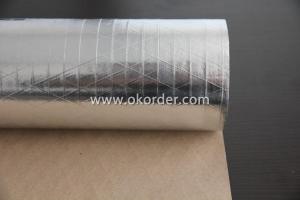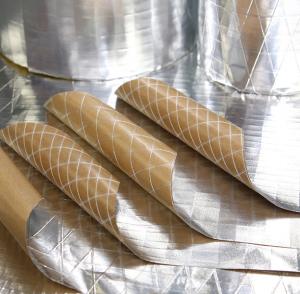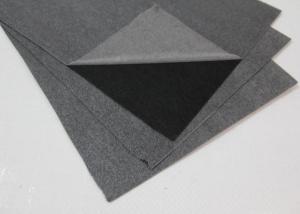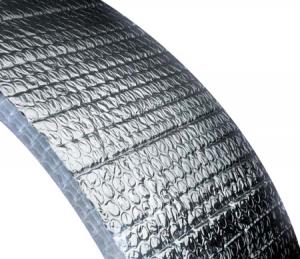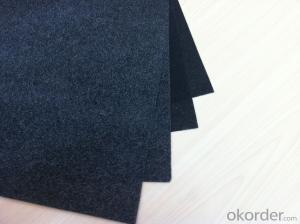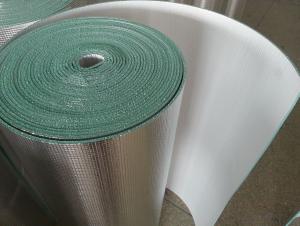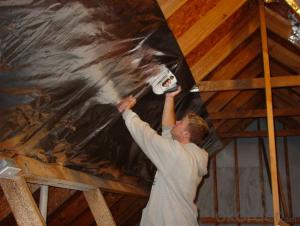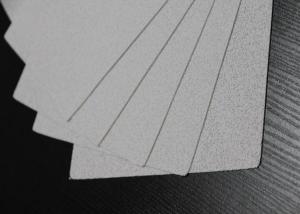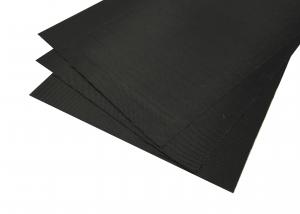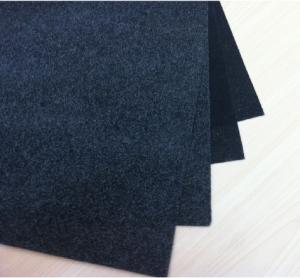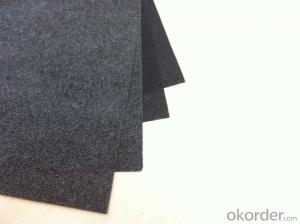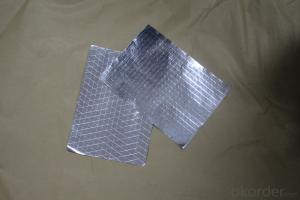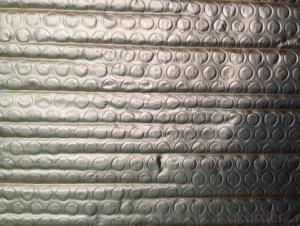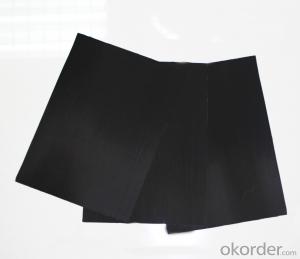600GSM COLORED SPRAY COATING TISSUE FOR CEILING-600
- Loading Port:
- Shanghai
- Payment Terms:
- TT OR LC
- Min Order Qty:
- 500 m²
- Supply Capability:
- 100000 m²/month
OKorder Service Pledge
OKorder Financial Service
You Might Also Like
Introduction of Fiberglass Tissue
Fiberglass Tissue is a kind of facing, which is made of by the white fiberglass tissue, and special production process.
Application of Fiberglass Tissue
Our black tissue are mainly used as facing for glass wool insulation, rockwool, mineral wool etc. Also fiberglass tissue facing is used under roof decking, under attic rafters, over existing attic thermal insulation, in floors, walls and crawl spaces, and in industrial and commercial buildings to block radiant heat coming into house through the roof during the summer and retain indoor heat generated during in winter
Advantage of Fiberglass Tissue
It is the high quality heat insulating and the invincible opponent of anti- condensation. The low and stable coefficient of heat conduction has good isolation effect.
The product has many advantages, such as light weight, heat insulation, shock absorption, sound absorption and noise reduction;
The product is easy to install and process and it also waterproof, seepage control, flame retardant.
The product also has many features, such as heat resistance, low temperature resistance, chemical resistance, ageing resistance etc.
Packing of Fiberglass Tissue
1. Waterproof paper then PVC shrinking Film
2. Water-Proof film only
3. Woven cloth
4. Kraft paper or Water Proof Film then Metal/wooden pallet
5. (Also as your request. )
Pictures of Fiberglass Tissue

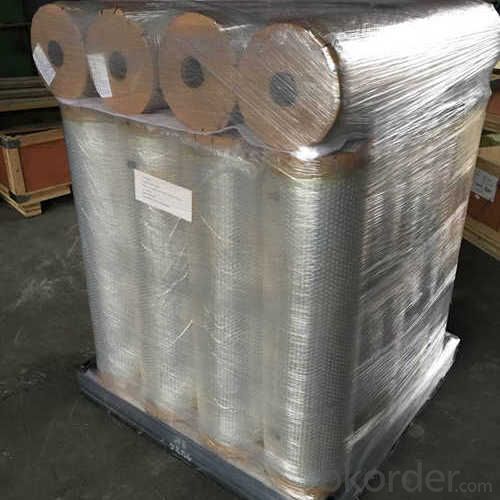
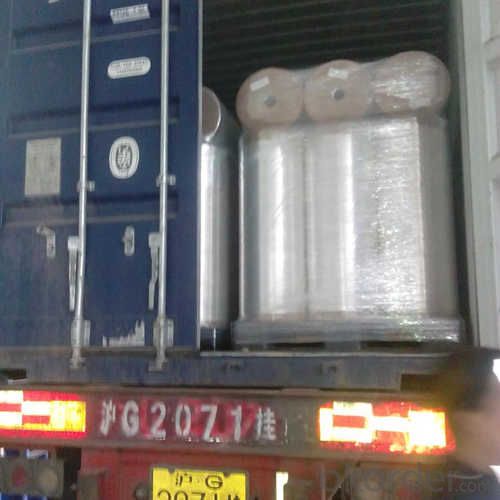
Specification of Fiberglass Tissue
Specification | ||
ITEM | UNIT | VALUE |
Type | C | |
Weight | g/m2 | 600±5 |
Thickness | mm | 0.40 |
Tensile Strength MD | n/125px | ≥130 |
Tensile Strength XD | n/125px | ≥90 |
Fiber Diameter | µ | 9 |
Fire Resistant Property | B1 | |
FAQ
We have organized several common questions for our clients,may help you sincerely:
1. What is the storage condition?
The Aluminum Foil Facing should be stored at room temperature and kept from wet and heat source.
2. How to guarantee the quality of the products?
We have established the international advanced quality management system,every link from raw material to final product we have strict quality test;We resolutely put an end to unqualified products flowing into the market. At the same time, we will provide necessary follow-up service assurance.
3. How long can we receive the product after purchase?
In the purchase of product within four working days, we will arrange the factory delivery as soon as possible. The specific time of receiving is related to the state and position of customers. Commonly 7 to 10 working days can be served.
- Q:What is the typical thickness of fiberglass facing?
- The specific application and requirements dictate the typical thickness of fiberglass facing, which can vary. Generally, fiberglass facing comes in thicknesses ranging from 0.5 millimeters to 2 millimeters. For lightweight and flexible applications like insulation and acoustic panels, thinner fiberglass facing (approximately 0.5 to 1 millimeter) is commonly utilized. On the other hand, heavier-duty applications in construction and industrial settings often require thicker fiberglass facing (around 1.5 to 2 millimeters) for enhanced strength and durability. To ensure optimal performance and functionality, it is crucial to consider the project's specific needs and specifications when determining the appropriate thickness of fiberglass facing.
- Q:Are there any health concerns associated with fiberglass facing?
- Yes, there are health concerns associated with fiberglass facing. Fiberglass is made up of tiny fibers that can become airborne when disturbed, such as during installation or removal. Inhalation of these fibers can irritate the respiratory system and cause symptoms like coughing, chest tightness, and difficulty breathing. Prolonged exposure to fiberglass fibers can also lead to a serious lung condition called fibrosis, where the lung tissues become scarred and stiff. Additionally, fiberglass can cause skin irritation and allergic reactions when it comes into direct contact with the skin. The small fibers can penetrate the skin, leading to itching, redness, and rash. To minimize the health risks associated with fiberglass, it is important to take precautions when working with it. This includes wearing protective clothing, gloves, goggles, and a respirator to prevent inhalation of the fibers. It is also crucial to properly clean up any fiberglass dust or debris to avoid further exposure. If you suspect that you have been exposed to fiberglass and are experiencing persistent respiratory or skin symptoms, it is recommended to seek medical attention for proper evaluation and treatment.
- Q:How is fiberglass facing installed?
- Fiberglass facing is typically installed by positioning it against the desired surface and securing it with adhesive or mechanical fasteners such as staples or screws. The facing is then smoothed out to remove any wrinkles or air bubbles, ensuring a tight and even installation.
- Q:What are the benefits of using fiberglass facing?
- Fiberglass facing offers numerous advantages in various applications. Firstly, its exceptional strength and durability make it highly resistant to cracking, warping, and other forms of damage. This quality makes it ideal for construction and structural purposes, where strength and longevity are crucial. Furthermore, fiberglass facing provides excellent thermal insulation properties. With its low thermal conductivity, it effectively prevents heat transfer and maintains a consistent temperature in both hot and cold environments. Consequently, it is widely used in insulation for buildings, HVAC systems, and other energy-efficient applications. Another benefit of fiberglass facing is its resistance to moisture and corrosion. Since it is non-porous and does not absorb water, it is highly resistant to mold, mildew, and rot. This makes it a suitable choice for damp or humid environments, including bathrooms and kitchens. Moreover, fiberglass facing is lightweight and easy to handle, making it convenient to install and transport. It can be easily cut and shaped to fit various surfaces and configurations, allowing for flexibility in design and installation. Its lightweight nature also reduces strain on supporting structures, making it cost-effective for construction projects. Lastly, fiberglass facing comes in a wide range of sizes, thicknesses, and finishes, allowing customization to meet specific project requirements. It can be coated or laminated with different materials to enhance performance, such as adding a vapor barrier or reflective surface. This versatility makes it suitable for various applications across industries, from construction to transportation. In summary, the advantages of fiberglass facing include its strength and durability, thermal insulation properties, resistance to moisture and corrosion, lightweight nature, and customization options. These qualities make it a popular choice in industries where these characteristics are highly valued.
- Q:China's glass fiber product code is what?
- P, S used in polyester hand paste molding, X used in epoxy laminating;
- Q:What is the lifespan of fiberglass facing?
- The lifespan of fiberglass facing can vary depending on a few factors such as the quality of the material, the environment it is exposed to, and how well it is maintained. However, on average, fiberglass facing can last anywhere from 20 to 30 years. With proper care and maintenance, it is possible for fiberglass facing to last even longer. Regular cleaning, avoiding harsh chemicals or abrasive cleaners, and protecting it from excessive sunlight and extreme temperatures can help prolong its lifespan.
- Q:What is fiberglass facing?
- Fiberglass facing refers to a thin layer or sheet made of fiberglass that is used to cover or protect surfaces. It is commonly used in construction and insulation applications to provide strength, durability, and resistance to heat, moisture, and chemicals.
- Q:Are there different types of fiberglass facing available?
- Yes, there are different types of fiberglass facing available. These can include woven fiberglass fabric, chopped strand mat, and fiberglass mesh, each with its own specific characteristics and uses.
- Q:Is fiberglass facing resistant to moisture or water damage?
- Fiberglass facing, indeed, possesses remarkable resistance against moisture and water damage. This exceptional property arises from the composition of fine glass fibers interwoven to form a robust and enduring material. Absent any capacity to absorb moisture, these fibers bestow upon fiberglass facing a high degree of resilience, rendering it especially suitable for environments prone to water or moisture exposure, like bathrooms, kitchens, and outdoor spaces. Moreover, its resistance to mold and mildew growth further heightens its ability to endure moisture.
- Q:How does fiberglass facing compare to other types of insulation materials?
- Fiberglass facing is a popular choice for insulation materials due to its numerous advantages over other types of insulation. Firstly, fiberglass facing offers excellent thermal insulation properties, helping to maintain a comfortable temperature inside buildings by minimizing heat transfer. It has a high R-value, which means it provides effective resistance to heat flow. Additionally, fiberglass facing is highly durable and long-lasting. It does not degrade or lose its insulating properties over time, ensuring that it remains effective for many years. This durability also makes it resistant to moisture, mold, and pests, which can be a common issue with other insulation materials such as cellulose or foam. Furthermore, fiberglass facing is easy to install, reducing both time and labor costs. It is available in various forms like batts, rolls, or loose-fill, making it adaptable for different applications and spaces. Its lightweight nature makes it easy to handle and maneuver during installation. One of the key advantages of fiberglass facing is its fire resistance. It is non-combustible, meaning it does not contribute to the spread of fire and can help contain it. This property makes it a safer choice compared to other insulation materials like foam, which can be flammable. Lastly, fiberglass facing is an environmentally friendly option. It is made from natural materials such as sand and recycled glass, reducing its impact on the environment. Additionally, fiberglass insulation can help conserve energy and reduce carbon emissions by improving the energy efficiency of buildings. Overall, fiberglass facing stands out as an excellent choice for insulation materials due to its thermal insulation properties, durability, ease of installation, fire resistance, and eco-friendliness. It outperforms many other types of insulation materials, making it a preferred option for various construction and insulation projects.
1. Manufacturer Overview |
|
|---|---|
| Location | |
| Year Established | |
| Annual Output Value | |
| Main Markets | |
| Company Certifications | |
2. Manufacturer Certificates |
|
|---|---|
| a) Certification Name | |
| Range | |
| Reference | |
| Validity Period | |
3. Manufacturer Capability |
|
|---|---|
| a)Trade Capacity | |
| Nearest Port | |
| Export Percentage | |
| No.of Employees in Trade Department | |
| Language Spoken: | |
| b)Factory Information | |
| Factory Size: | |
| No. of Production Lines | |
| Contract Manufacturing | |
| Product Price Range | |
Send your message to us
600GSM COLORED SPRAY COATING TISSUE FOR CEILING-600
- Loading Port:
- Shanghai
- Payment Terms:
- TT OR LC
- Min Order Qty:
- 500 m²
- Supply Capability:
- 100000 m²/month
OKorder Service Pledge
OKorder Financial Service
Similar products
New products
Hot products
Related keywords
